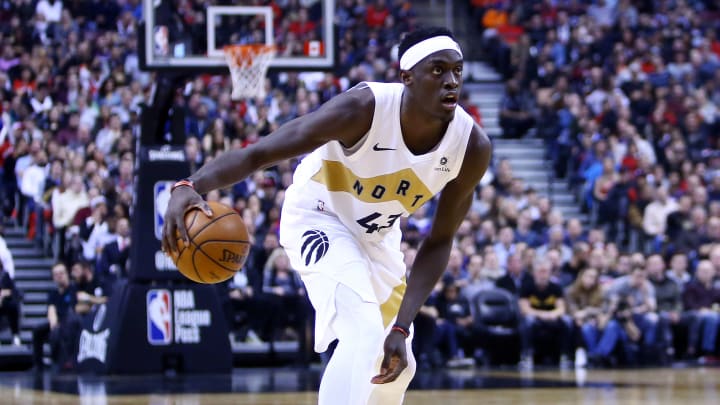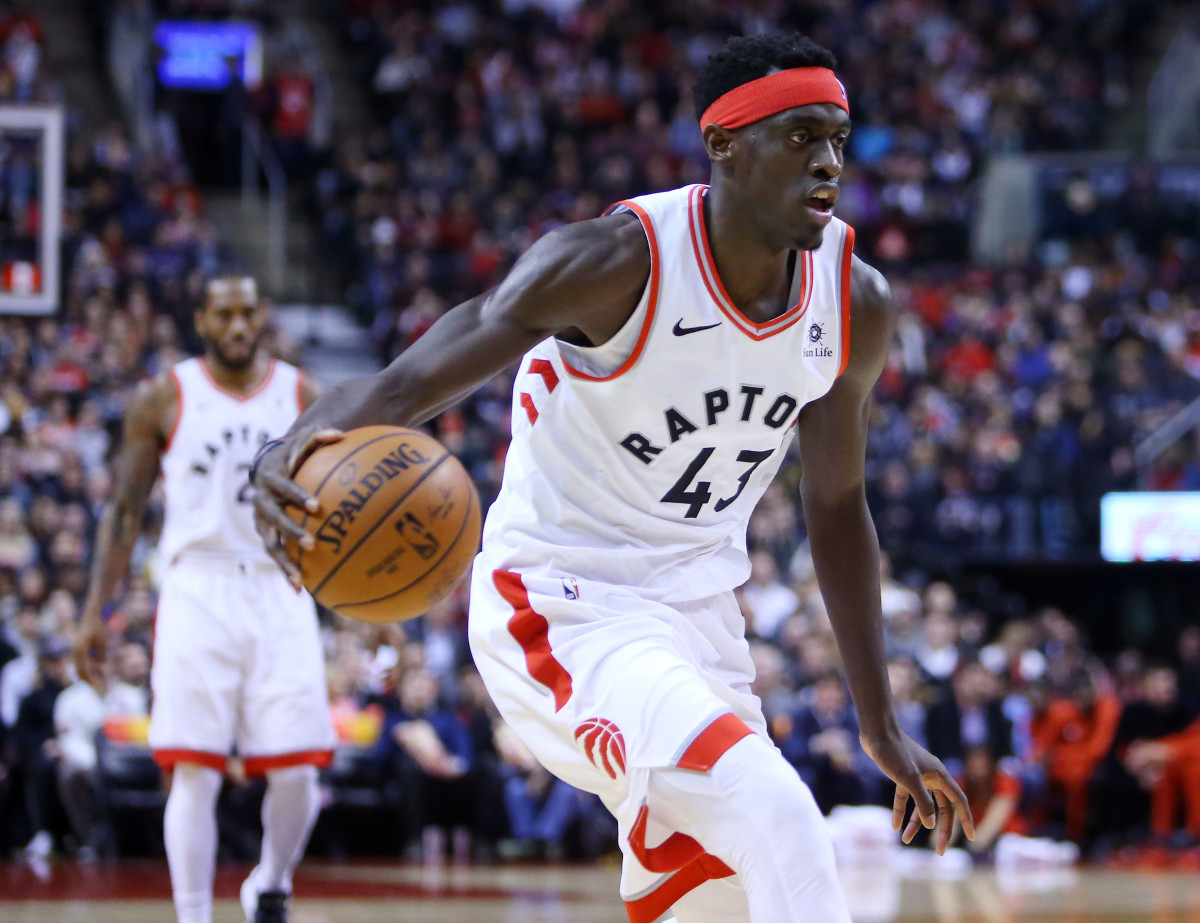Pascal Siakam's Breakout Season and the Raptors' Playoff Path

The open secret of Pascal Siakam’s breakout season—one primed for the Most Improved Player award—is that it all could look quite different under playoff conditions. The rules of the game may not change in the postseason, but everything else does. Rotations shorten, exposing every player to consistently superior competition. The pace slows, eliminating many of the fast breaks that pad stat lines and boost efficiency. Seven-game scrutiny can make damning even the slightest limitation. None of this is entirely new to Siakam, save for the stakes: Toronto has come to rely on the 24-year-old forward in a way it never had previously. Every opponent in the Raptors’ playoff path will scrounge for leverage in that reliance.
On the most basic level, Siakam—a slasher by trade—will be forced to prove his shooting percentages. This is a premise that has followed Siakam and the Raptors throughout the season. Scouts and coaches around the league have kept tabs on Siakam’s spot-up shooting from afar this year, both out of professional diligence and genuine curiosity. They’ve found one of the biggest year-over-year improvements in the league: a 22% shooter from beyond the arc a season ago now converting at a remarkable 37%. If that number is a fair representation of Siakam’s actual shooting ability, every action Toronto runs will become that much more difficult to contain. Relaxing coverage of Siakam is one of the most viable avenues opponents have for loading against other stars and actions. Without it, the coverage could be stretched thin enough for Kawhi Leonard to puncture it at the point of his choosing.

For now, this remains a profound if. Tempting as it is to credit Siakam for his accuracy in general, it would be wise to remember him as the sort of shooter capable of fading to 29% for an entire month, as he did in December. Siakam’s improvement may not have the linearity it seems; three-point shooting is subject to higher variance in general, particularly for those so new to actually making shots. It would be unreasonable to expect Siakam, savvy as he may be, to hold that kind of percentage so soon. His February and March have seemed unseasonably warm for a reason.
The good news for Toronto is that the difference may not matter. Even the fact that Siakam can peak with this kind of run has the potential to change a series. Competition in the upper reaches of the East is so intense—and separated by factors so granular—that even a nice stretch could prove meaningful. A make or two at the right time has the power to shake things loose. Surrendering open looks to borderline shooters is rarely as simple as it seems. No player or coach wants to be made a fool of at the most visible point in their season, regardless of the mathematical tradeoffs. In the right circumstances, letting Siakam shoot could be both the strategically correct move for Raptors opponents and realistically untenable.
There is no hard and fast calculus in cases as psychological as these. One could weigh the expected value of a Siakam three-point attempt against other alternatives, but team dynamics can often swing in unexpected ways. Softer coverage against Siakam might lull some other defender out of focus. Siakam could respond not by taking more jumpers, but by setting more screens—putting the defense in a bind on every occasion. On the other side, there’s just no way to fully account for the invisible toll of a player like Siakam missing four straight shots. Guilt can change the way even a professional shooter regards an open look, much less a part-timer without much experience in shooting their way out of a slump. Good theory can sometimes lose out to practical consequence.
Whatever the threshold for change in Siakam’s case, it’s almost certainly lower than 37%. A defense might like the idea of matching up against Siakam with a center and daring him to shoot, until he uses that space to walk into a floater or two:
It might seem wise to force the ball out of Lowry’s hands in a pick-and-pop, until Siakam politely declines the open jumper in favor of a layup:
Activity can be a substitute for accuracy. The catch is that Siakam has quietly been one of the NBA’s more efficient one-on-one creators this season. Toronto has the luxury of sparing their third option from most unfavorable situations, but in many games they’ll call on Siakam to salvage a set that went nowhere or work over some mismatched defender. Often it’s players like Siakam who swing their team’s playoff fate. So much depends on a handful of possessions from Eric Gordon or Malcolm Brogdon, Tobias Harris or Paul Millsap. If they exploit the scenarios put before them, they’ll force the defense to make deeper sacrifices. If they can’t, those players will tacitly agree to whatever ploy their opponents cook up. Let the mind games begin.
